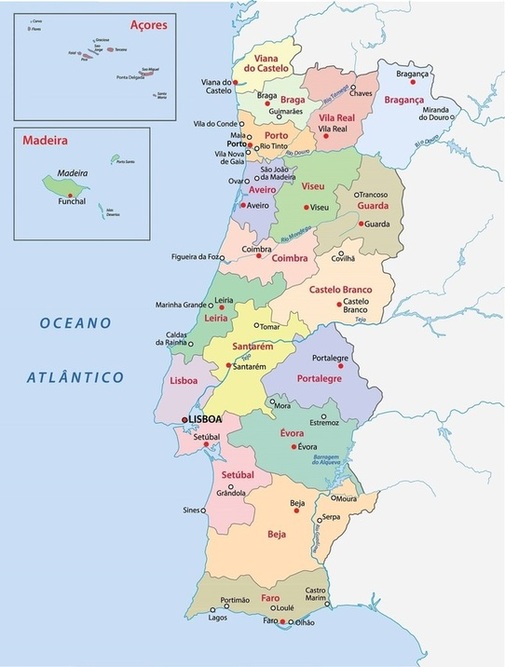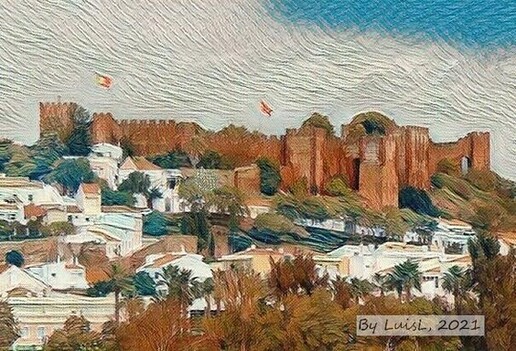
Location - District: Faro; Municipality: Silves
Status: Classified as National Monument since 1910
Time of existence of the Castle

Historical Context
The primitive human occupation of the Silves hillfort dates back to prehistoric times, with Phoenician navigators believed to have sailed up the River Arade (navigable until the end of the Middle Ages) in the first millennium B.C., and later the Roman presence, who exploited a copper deposit here, according to archaeological evidence.
Some specialists argue that they were responsible for a first fortification, between the IV and V centuries, also attributed to the Visigoths who succeeded them.
However, what has so far been confirmed archaeologically is the existence of a wall built (today almost completely hidden) soon after the Arab conquest in the 8th century.
Thus the Muslim occupation was the one that exerted the greatest influence on the territory, being present from the VIII to the XIII centuries.
It is during this period, particularly from the 9th to 12th centuries, that Silves (or Xelb, Xilb or Al-Shilb as it was called in the Muslim period) becomes an important economic, social and cultural centre.
At that time, the medina Xelb was given the title "cradle of Arabic-Andalusian poetry" and was known as the city of philosophers and poets.
(Note - a medina is an urban settlement organized within walls, i.e. protected within a fortification).
It was here, for example, that the poet and third and final Ababbai king of the taifa of Seville, Al-Mutamide, lived while still a prince. Later, already as king, Silves became the capital of a taifa (independent Islamic kingdom), and the general configuration of the walled perimeter, in plan, which still stands today, probably dates from this period.
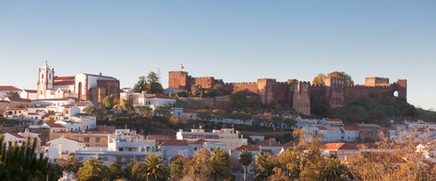
The early days of Silves Castle
Silves Castle is one of the main Muslim fortifications in Portugal, and one of the best in condition that has survived to the present day.
Its construction dates back to the beginnings of Islamic rule in the peninsula, as archaeological discoveries of remains dating from the 8th - 9th centuries AD seem to prove.
Dominating the mouth of the River Arade, it is the largest castle in the Algarve region, and is considered to be the finest example of Islamic military architecture in the country. The surrounding urban area develops along the eastern, southern and western slopes.
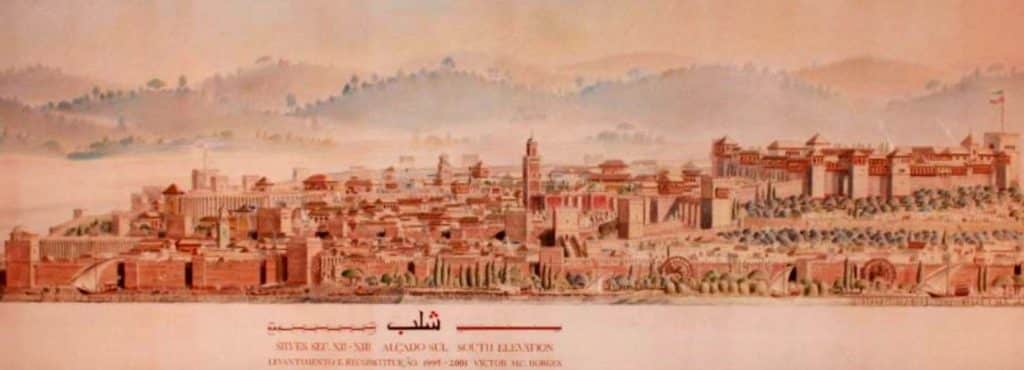
Reconstitution of Xelb (Silves) (13th century - year 1230)
Panels by Victor Borges, author of "Cursum Perficio" and "Apokalypsis
It was built at the eastern end of a hill with a maximum height of 56 m, on the right bank of the river, where the houses were interspersed with steep and irregular streets that stretched down to the Arade river.
On the northern and eastern sides of the elevation referred to, the slopes, very steep, provided good natural defence conditions.
The fortification occupies an area of approximately 12,000 m², and was built using military rammed earth and covered with sandstone (sandstone), an abundant material in the region that gives it its well-known reddish hue.
It is important to mention that military rammed earth is raw earth (soil) stabilized with lime. Due to its versatility, quality, simplicity of execution and abundance of raw material (earth or soil) it was adapted, thanks to the increase in the percentage of lime, to the great construction works of walls in military rammed earth.
With time, the military rammed earth stabilizes, or to put it another way, the slow oxidation of the lime makes the soil gain the resistance of a hard stone and offers remarkable resistance to erosive agents (rain, wind, impacts, etc.).
And the Almohad dynasty excelled at building walls in military mud.
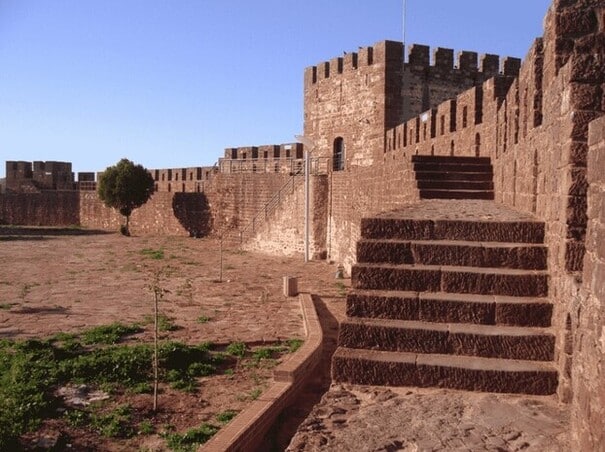
Silves Castle has an irregular polygonal wall plan, consisting of 4 turrets and 7 battlements with battlements, connected by a curtain wall with an arcade, topped by battlements with battlements, and occupying a relatively flat area.
The medieval castle
What remains today of the defensive system of walls that surrounded Silves dates back almost exclusively to the Almohad periods of the Islamic occupation (12th-13th centuries) and to the struggles of the Christian Reconquest carried out by the first five kings of Portugal. The dates we would highlight are as follows:

Portrait of King Sancho I of Portugal
Cornelis Galle (1621), Dutch Museum in Rijks
1189 - D. Sancho I (1185-1211) followed his father's (D. Afonso Henriques) policy and conquered, with the help of knights of the 3rd Crusade to the Holy Land, first Alvor and then Silves, at a time when this was the most important Moslem city west of the Guadiana river.
After the first failed attempt at this conquest, at the beginning of the year, a new attempt was made that same year, with the help of a new crusader fleet (now of English and Germans), which attempted, from the second half of July, the conquest of Silves.
After more than a month of a harsh siege, the settlement capitulated.

Of this history, the narrative of one of its participants has come down to us, describing the violence of the siege, as well as the employment of a variety of war machines, which included wooden towers, catapults and a "hedgehog" (a wooden sphere armed with iron spikes).
Thus, in early September, after the destruction of several towers and sections of the walls, the settlement finally surrendered.
1191- Under the command of Caliph Abu Yusuf Ya'qub al-Mansur, the Muslims counter-attack and conquered again all territories south of the river Tejo (including Silves), with the exception of the town of Évora.
1142 - The Knights of the Order of Santiago - it was still King D. Sancho II (1223-1248) - under the command of his Master, D. Paio Peres Correia, attempted the reconquest of Silves. However, this only took place definitively under the next reign of King Afonso III (1248-1279) in 1253, when his bishopric was restored.
Silves Castle and the 13th to 19th centuries
D. Afonso III granted the town its charter (1266), when he also ordered the recovery and reinforcement of its defences. Later, D. Fernando (1367-1383) and D. João I (1385-1433) promoted recovery works in the castle.

Reconstitution of Xelb (Silves) (13th century - year 1230)
Panels by Victor Borges, author of "Cursum Perficio" and "Apokalypsis
It is believed that new works of expansion and reinforcement have occurred under the reign of King Manuel I (1495-1521), who granted a New Charter to the village (1504), since the works of the Cathedral Church and Mercy date from this period.
In the 14th and 15th centuries Silves enjoyed the prosperity of being the capital of the bishopric and its flourishing maritime trade. In 1457 the Infante D. Henrique was appointed Mayor of Silves by Afonso V of Portugal (1438-1481).
Silves was then a city of considerable maritime, commercial and agricultural importance, possessing shipyards and an excellent fluvial port, very close to the Atlantic.
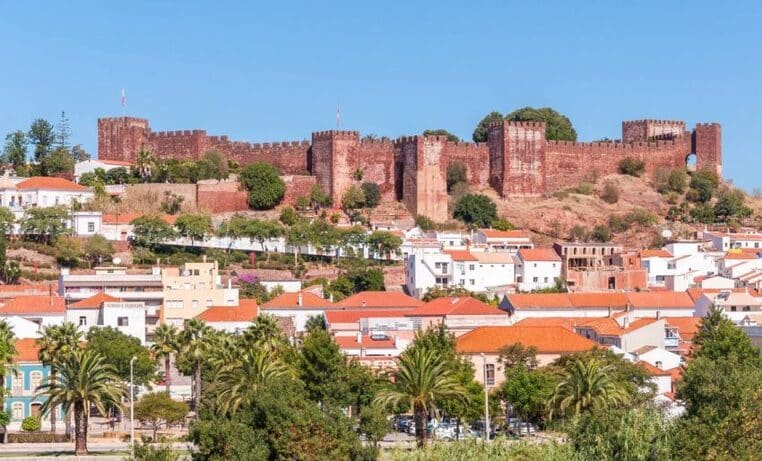
It was then the most important city in the Algarve, the seat of a bishopric, and the communication route linking the region to the rest of the Kingdom of Portugal passed through here.
It was also here that the chronicler Gomes Eanes de Zurara, knight of the House of Infante, wrote the "Crónica da Tomada de Ceuta".
The following centuries brought the silting up of the Arade River and the consequent loss of its navigability (main communication route with the outside world) which was harmful to the city that progressively lost its economic, political, military and religious importance (with the change of the bishop's seat to Faro in 1534).
The earthquake of 1755
When the earthquake occurred in 1755 the structure of Silves castle was severely damaged. According to a contemporary testimony "The city of Silves lost its Cathedral, Tower, castle and walls".
In 1836, after the end of the Liberal Fights (1828-1834) the castle walls were intervened at the expense of the population, insecure with the guerrilla actions of the "Remexido" in the region.
From the 20th century to our days
In the 1930s and 1940s, major consolidation and restoration work was carried out by the Direcção Geral dos Edifícios e Monumentos Nacionais (DGEMN - General Directorate for National Buildings and Monuments), clearing away stretches of the ramparts and rebuilding some towers that were threatened with ruin.
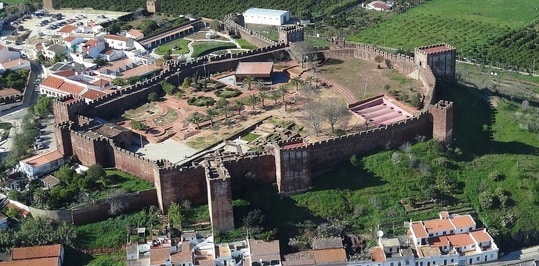
The Castle property is now owned by Silves Municipal Council through an Auto de Cessão of 1940.
From 1965 to 1968 new campaigns of intervention were carried out. The complex suffered further damage, caused by the 1969 earthquake, after which it underwent general consolidation works. New campaigns took place in the 1970s, 1980s and 2000s (under the Polis Program).
Archaeological excavations have been taking place inside the castle since 1984, coordinated by Rosa Varela Gomes (FCSH-UNL), lecturer and researcher in the area of Medieval Islamic Archaeology, which brought to light vestiges of Muslim buildings from the 8th to 13th centuries, with new excavations having been carried out more recently.
Interrupted in 2020, due to the pandemic situation that Portugal and the world are going through, Silves Castle has hosted one of the biggest and most interesting Medieval Fairs in the country every year for several years.
Like it? Then share it!

